Packages & Tutorials
Engineering Files & Tools
Software
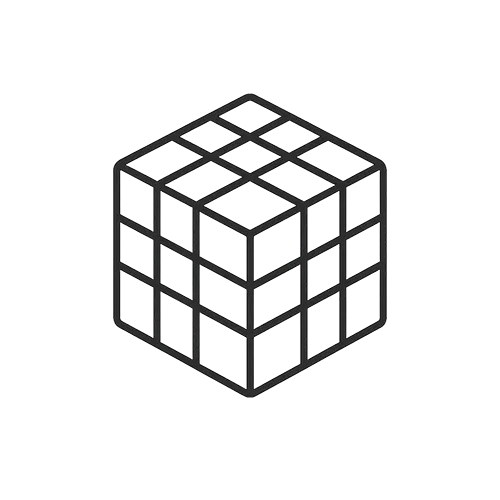
Ready-to-use Models (FEA/CFD)
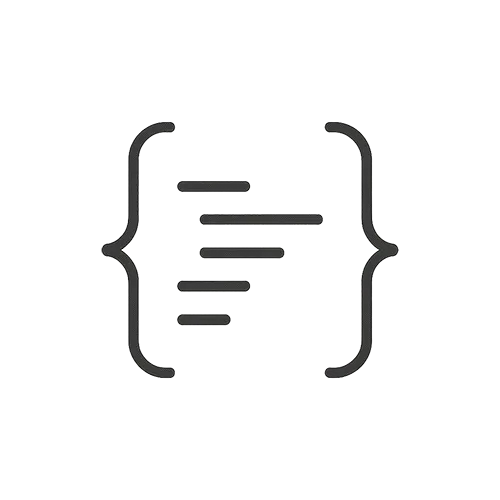
Excel Sheets & Hand Calculations
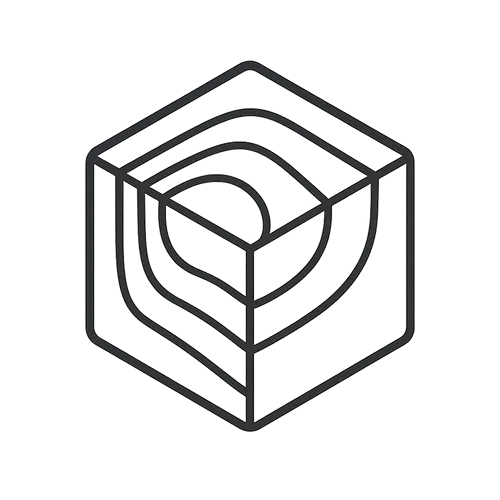



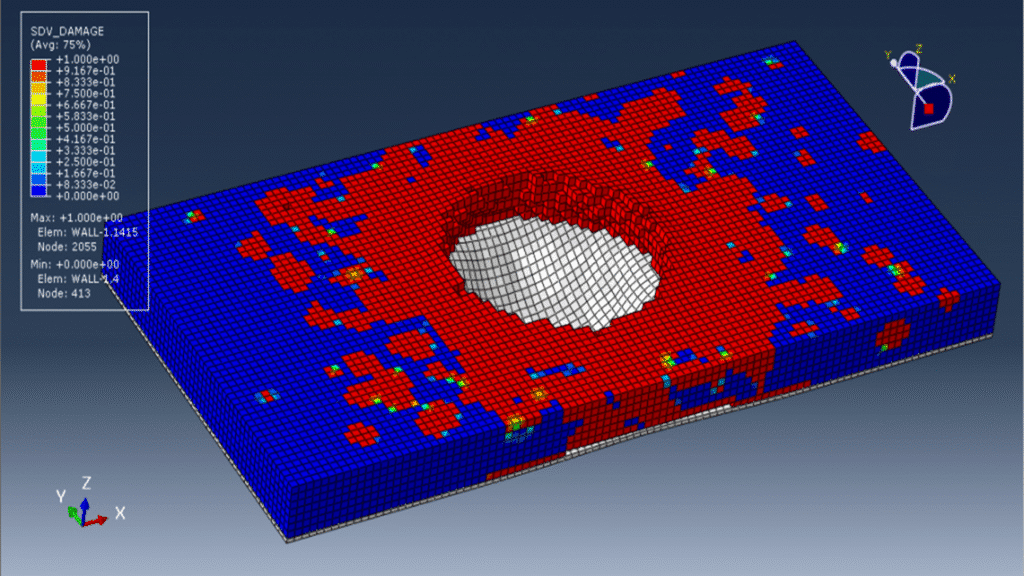
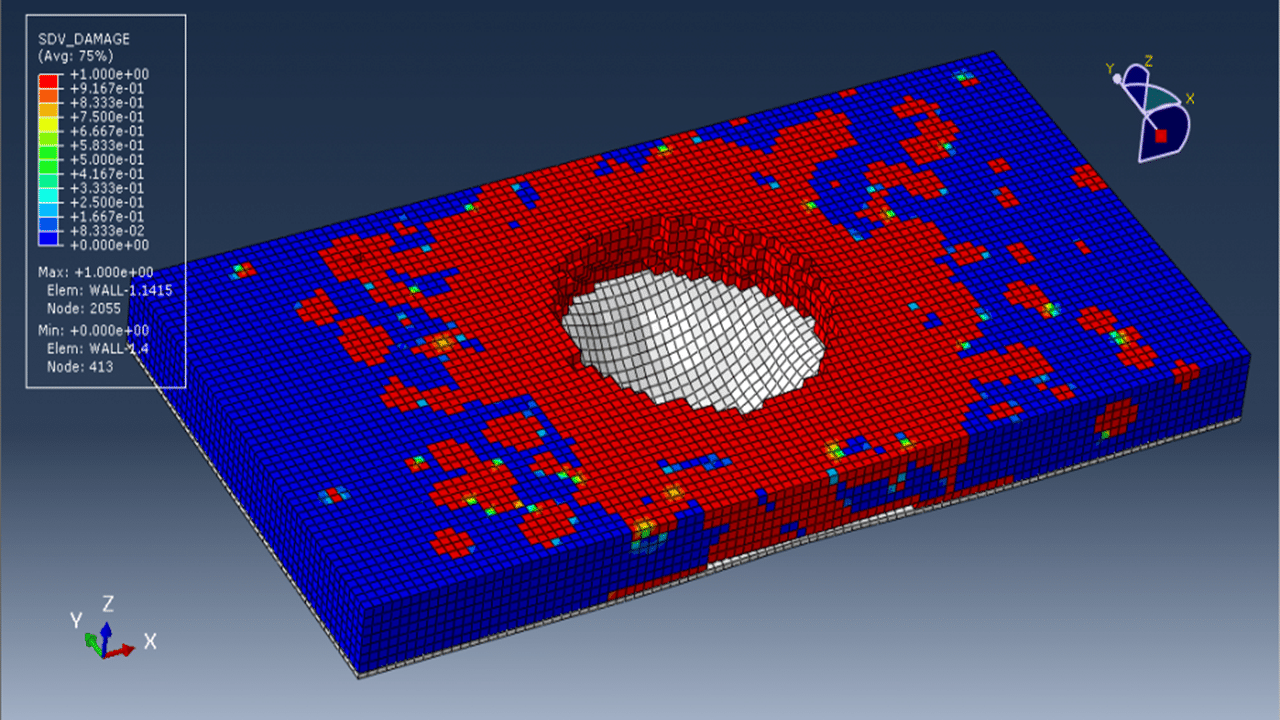
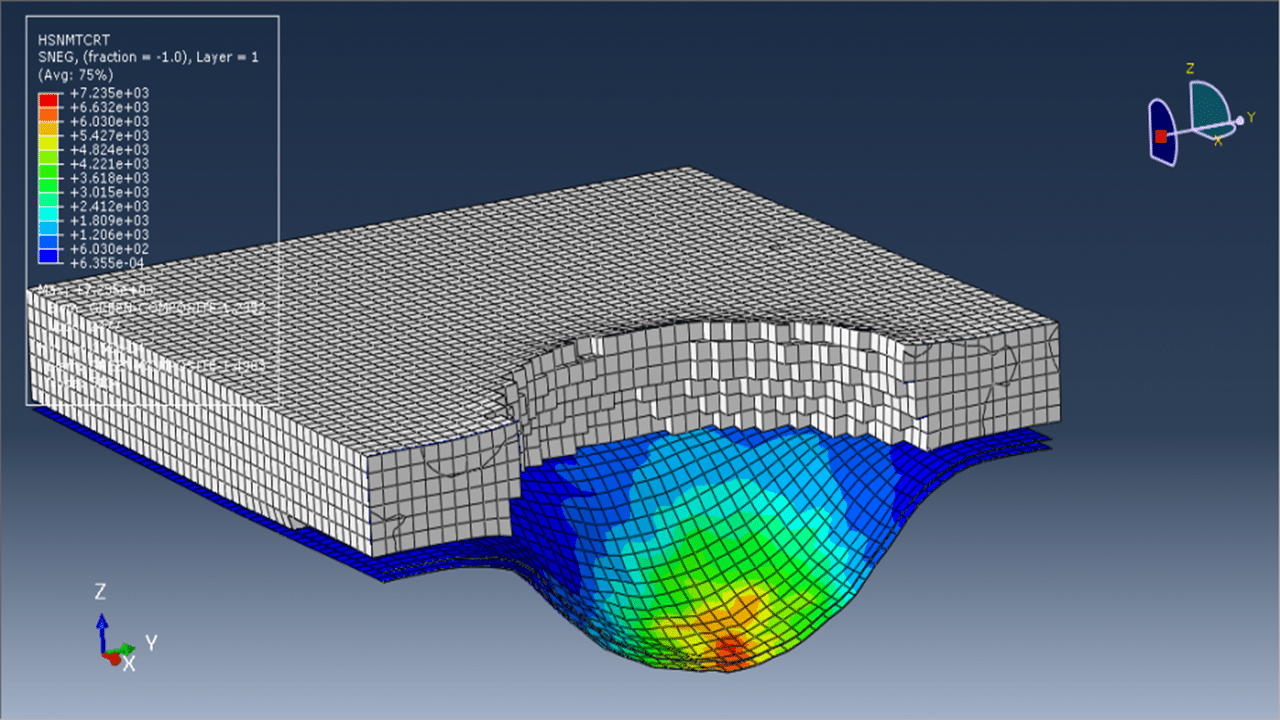
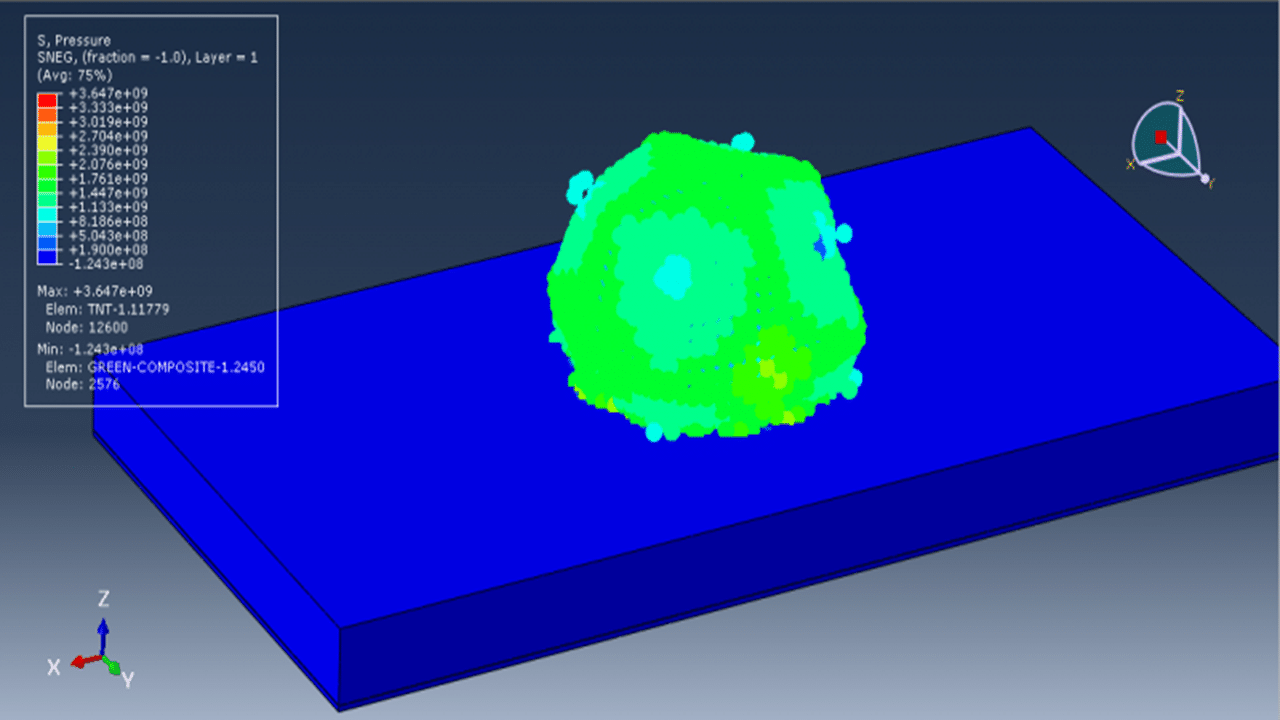
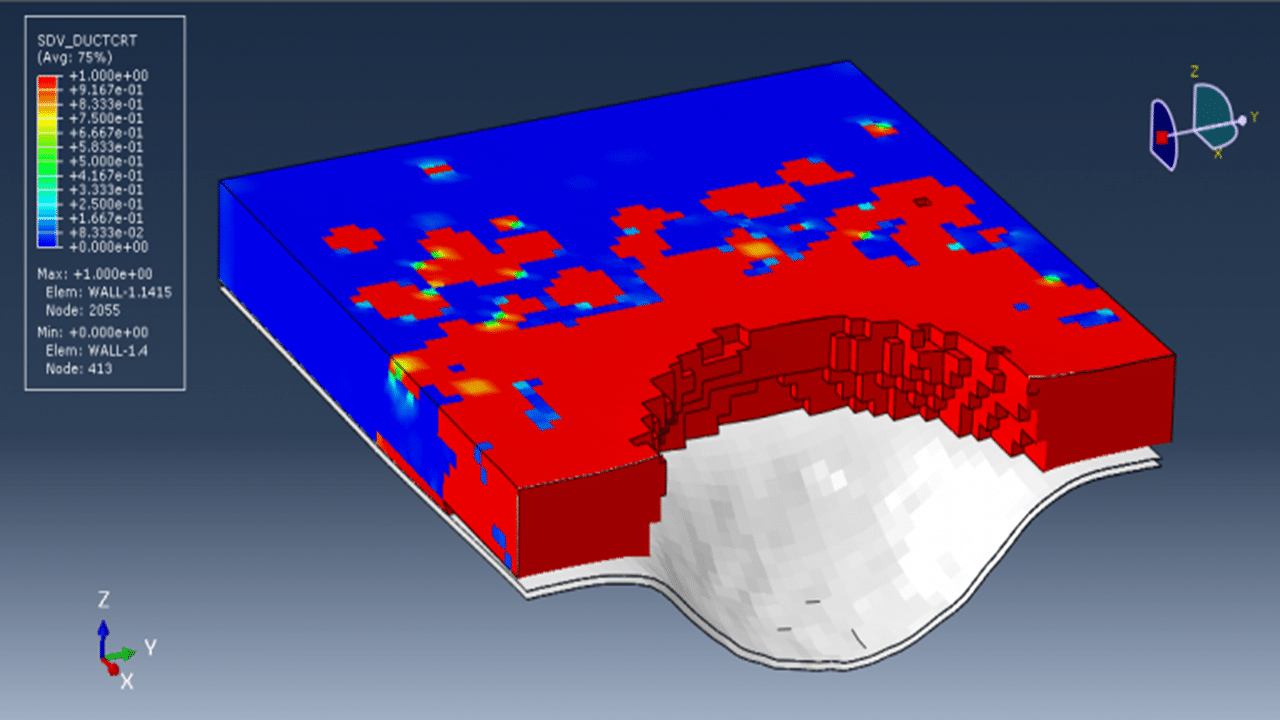
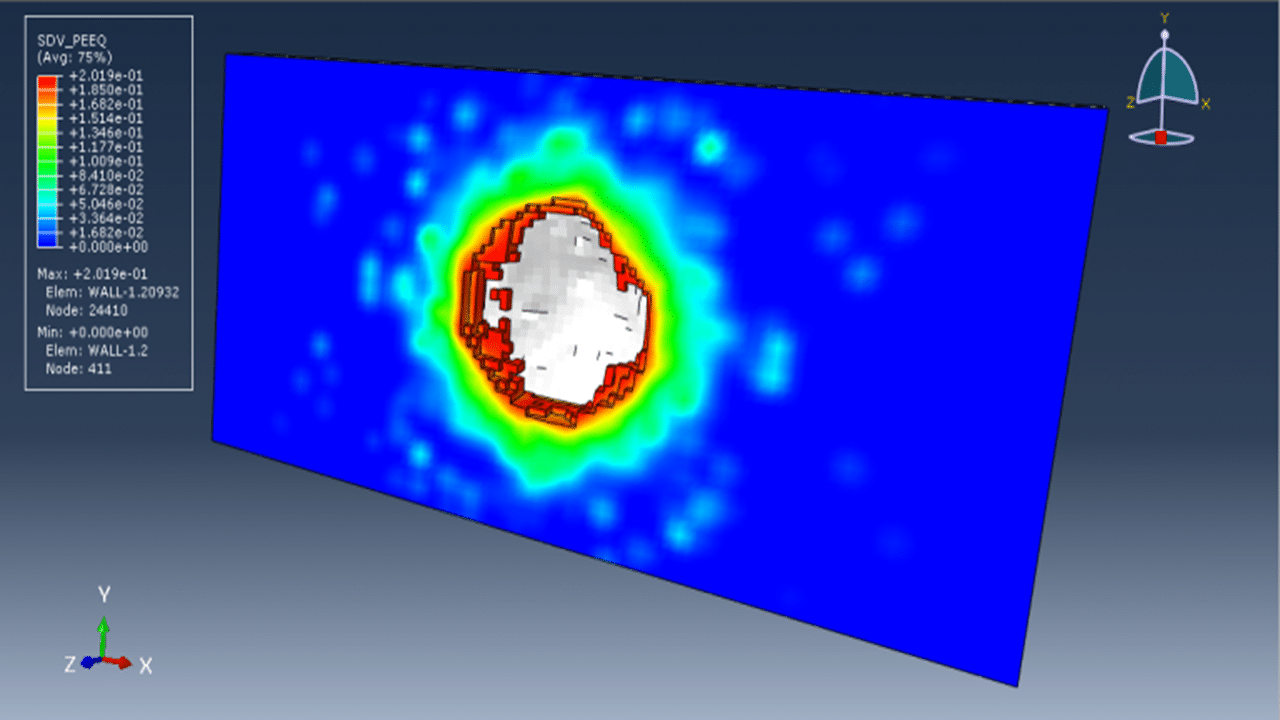
In this tutorial, the explosion simulation near a reinforced concrete wall with green composite reinforcement using the SPH method has been investigated. The TNT is modeled as a three-dimensional solid part. The concrete wall or slab is also modeled as a 3D solid part, while the green composite material, consisting of eight layers, is represented as a three-dimensional shell part.
Due to the growing threat of terrorism, the study of structural response under high-impact and explosion loading is no longer limited to military applications. The significant advancements in computational power over the past three decades have made finite element simulation a leading tool for analyzing blast effects on structures.
Green composites are gaining attention because of their combination of strength, stiffness, lightweight nature, and eco-friendly characteristics. These materials are also non-toxic, durable, corrosion-resistant, low-cost, and offer flexibility in design—making them ideal for structural applications. Increasing environmental awareness has driven research interest toward the use of sustainable, natural-fiber composites in protective structures.
To simulate the TNT explosion, the Jones-Wilkins-Lee (JWL) equation of state is used. This model calculates the pressure generated from the explosive’s chemical energy release and is implemented using the programmed burn approach, where detonation is triggered based on wave speed and distance rather than material shock.
For the concrete wall, either the Johnson-Holmquist (JH) model or the Concrete Damaged Plasticity (CDP) model can be applied to capture damage caused by blast waves. The green composite material is modeled using an elastic lamina model combined with the Hashin damage criterion, which predicts fiber and matrix failures under impact.
The simulation uses a dynamic explicit step suitable for high-speed events and a general contact algorithm to handle all interactions. A tie constraint is applied between the green composite and the concrete wall to ensure proper bonding. A refined mesh is necessary across all parts to ensure accurate results.


Dynamic
€1,00 €0,00
See more

Want to receive push notifications for all major on-site activities?